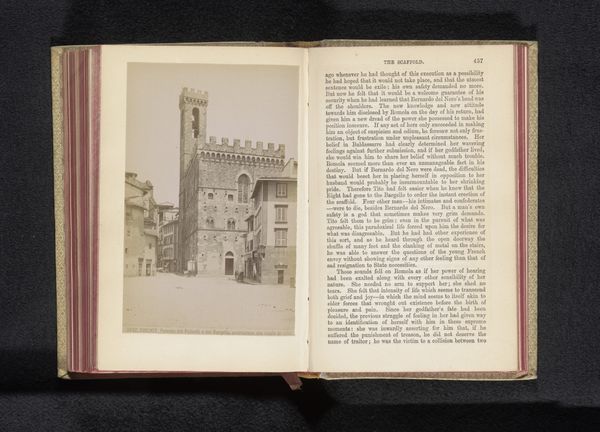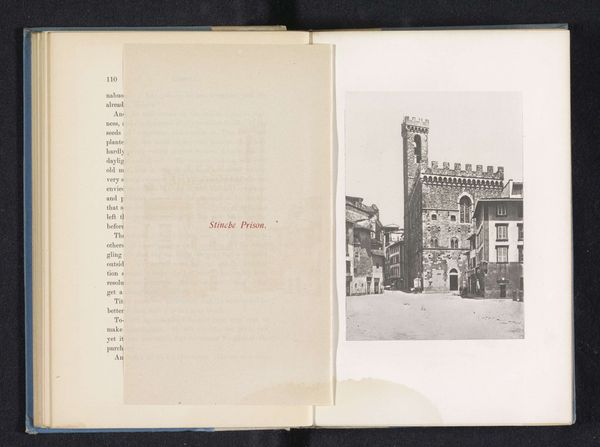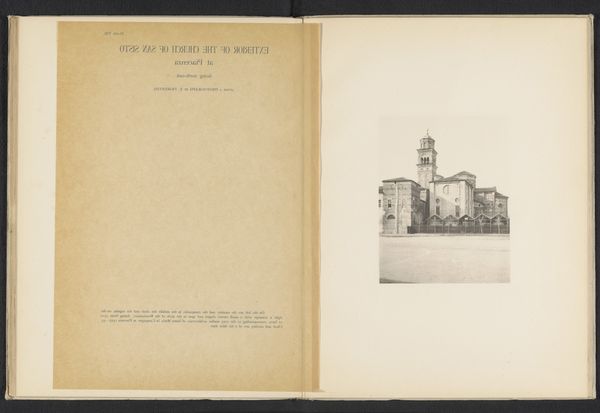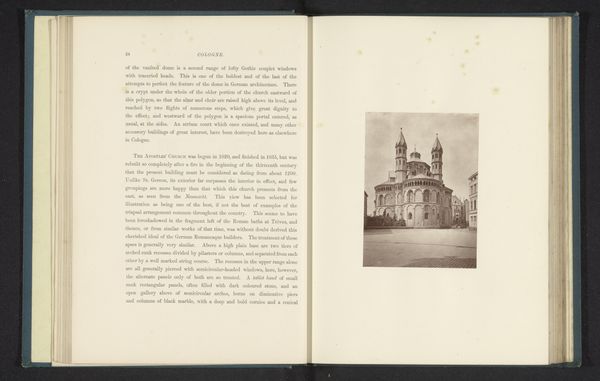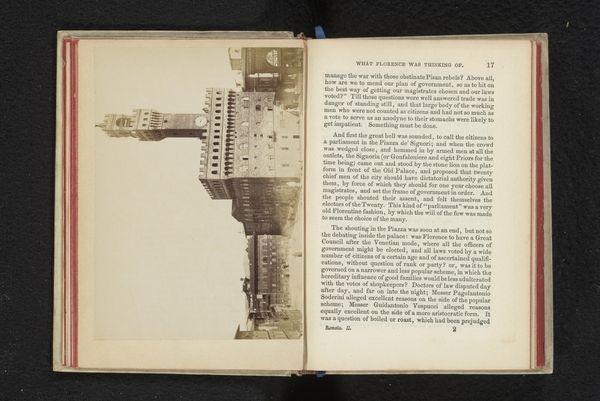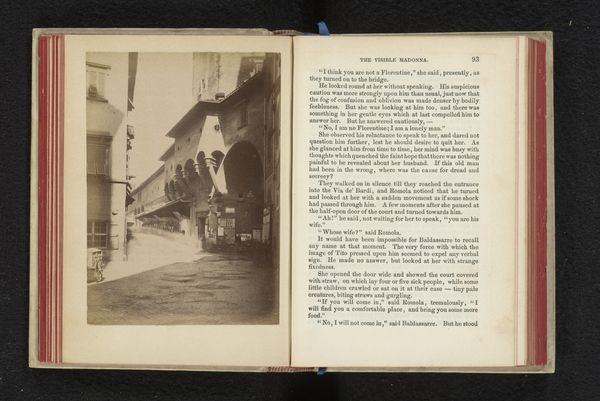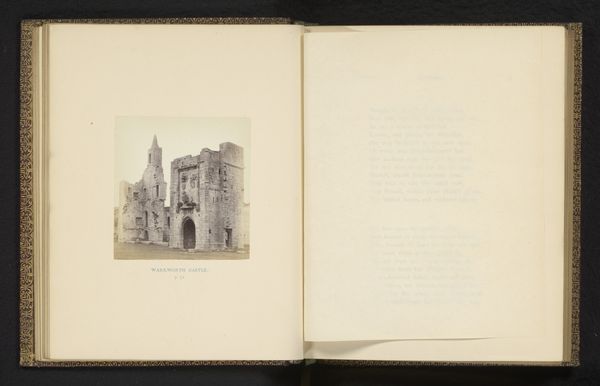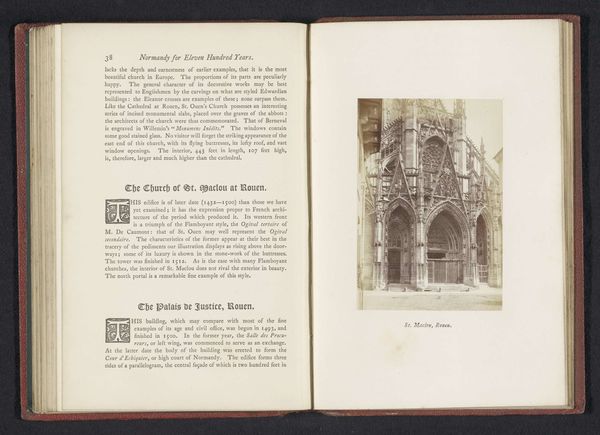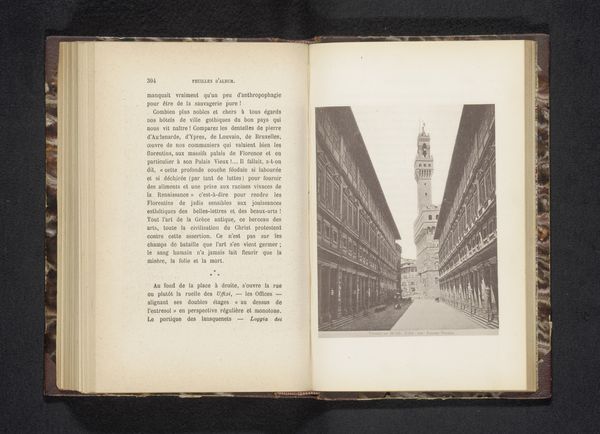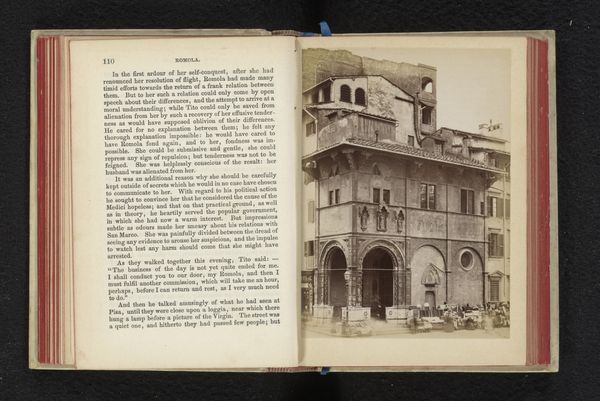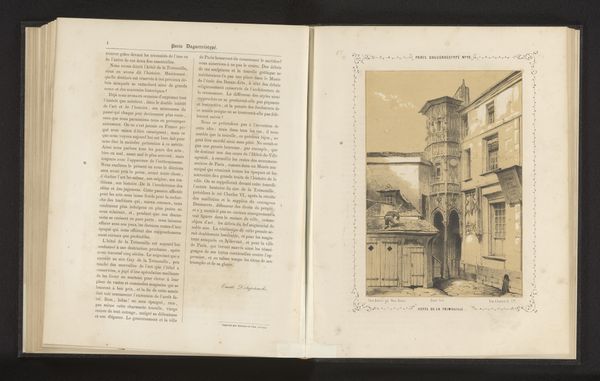
print, photography, gelatin-silver-print, albumen-print
# print
#
photography
#
gelatin-silver-print
#
cityscape
#
albumen-print
Dimensions: height 136 mm, width 98 mm
Copyright: Rijks Museum: Open Domain
Curator: This photographic print, "Bargello te Florence" by Giacomo Brogi, dated before 1863, presents a cityscape bathed in early photographic light. Editor: There’s something so stark and beautiful in the monochrome palette; a quiet but solid dignity arises from the image, given the age of the work. It calls to mind architectural documentation, with attention devoted to surface quality and overall structure. Curator: Absolutely. The print—likely an albumen print, perhaps even a gelatin-silver print given the nuances in texture—captures not only the architecture but also a sense of Florence frozen in time, imbued with the symbols of its power and permanence. You sense the intent to portray not just buildings, but an enduring civic identity. Editor: And the social process in producing such a photo. A fairly mobile studio has to be arranged. The glass plate meticulously prepared. How were subjects—especially everyday laborers passing by—persuaded to not linger in the image for longer than the 20 seconds to 30 minutes of the exposure? A negotiation for a view as much as it is a capturing of place. Curator: It's evocative, isn’t it? The composition emphasizes the Bargello as more than just a structure; its crenellations and sturdy facade convey a message about justice, order, civic pride. The choice of viewpoint invites viewers to contemplate Florence's historical consciousness. Editor: I think, too, the repetition of geometric patterns on its surface communicates not just control, but how standardization in architecture was used to create the appearance of equality. How we understand fairness might well change depending on where in relation to these buildings you reside, of course! Curator: Thinking about symbols here gives context, doesn't it? Brogi doesn't merely present us with a building; he delivers a cultural artifact loaded with political connotations relevant for his audience and those who study it to this day. Editor: Considering that it's a reproduction *in* a book adds to the experience as a material object, of course! A dissemination strategy involving reproduced, scaled-down views in dialogue with a different form, that of literary storytelling. How do we value this in the grander scale of the "art world?" Curator: Indeed, we discover the layered echoes of cultural memory through such visual mediums, allowing the observer to explore the symbolism with broader understanding. Editor: And a means by which photographic technology creates not just an artwork but access and knowledge for a readership far removed from Florence at the time of printing. Thank you!
Comments
No comments
Be the first to comment and join the conversation on the ultimate creative platform.
